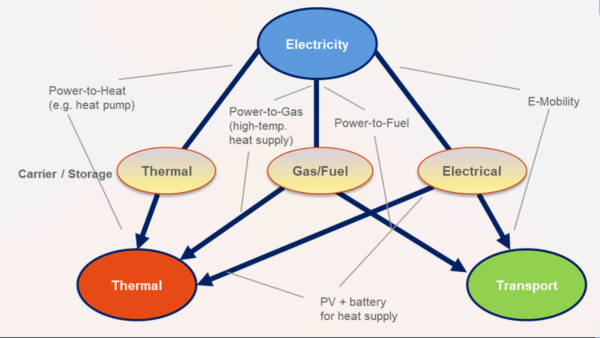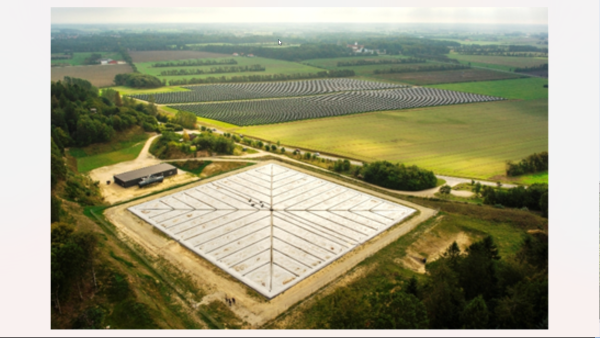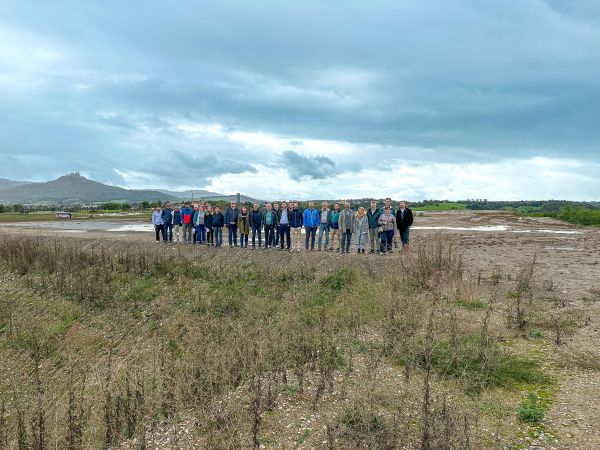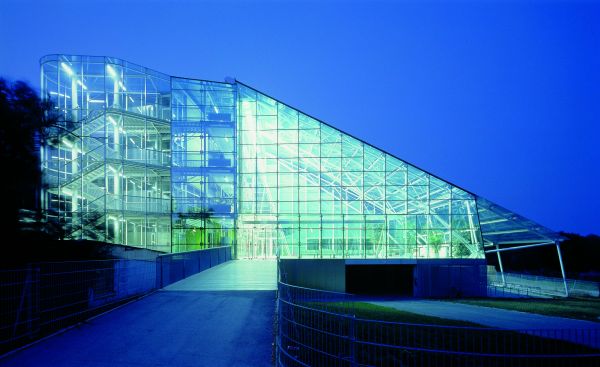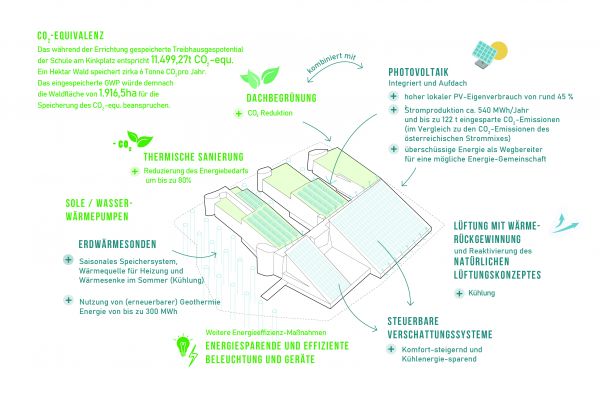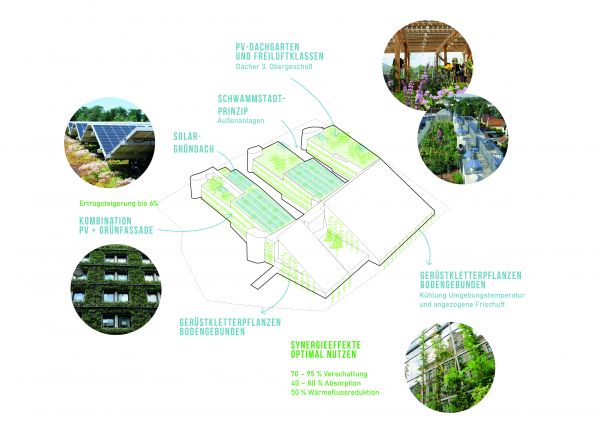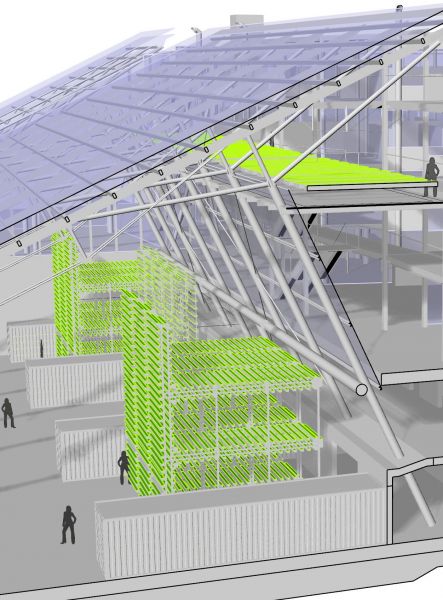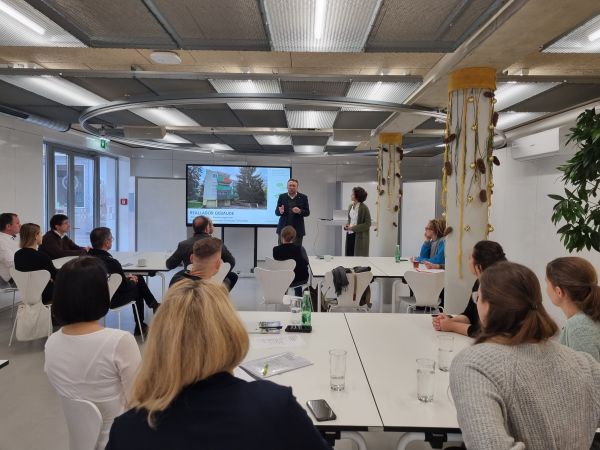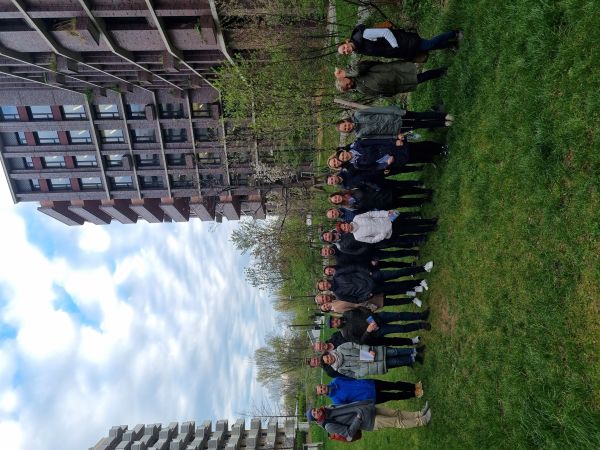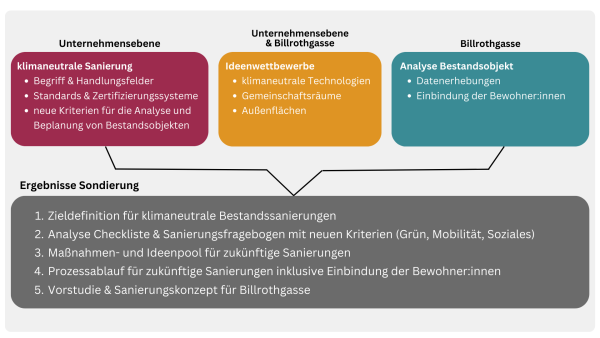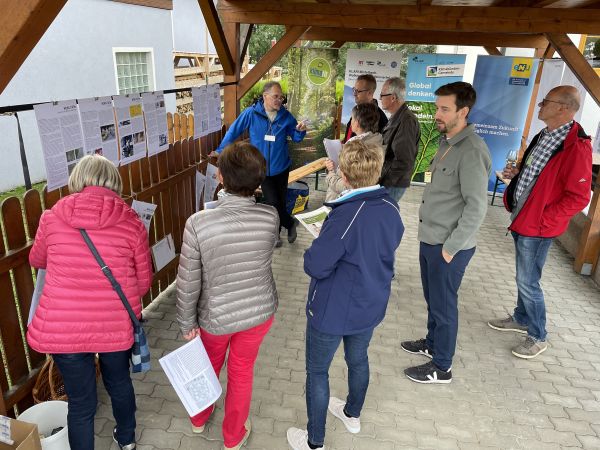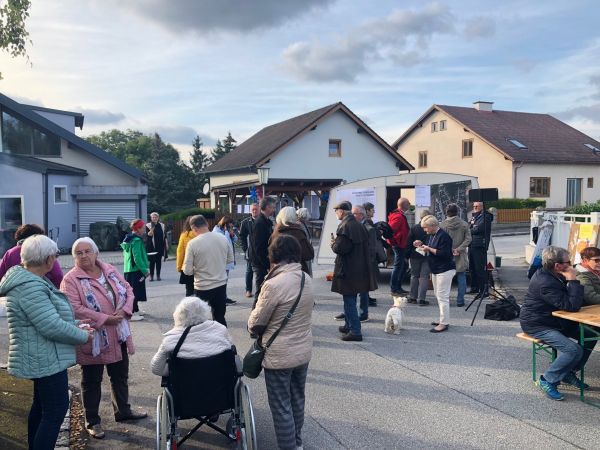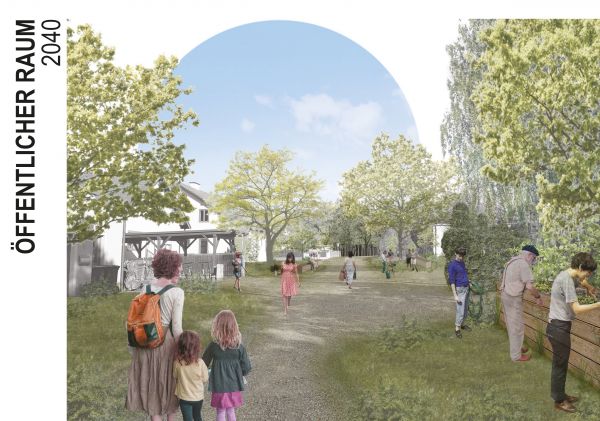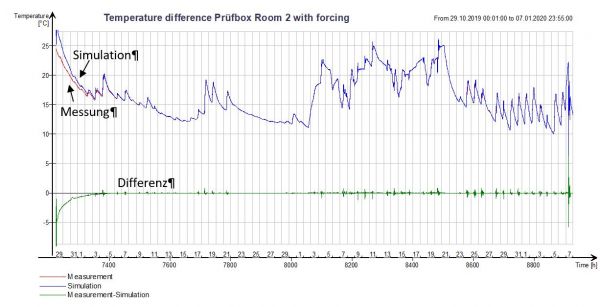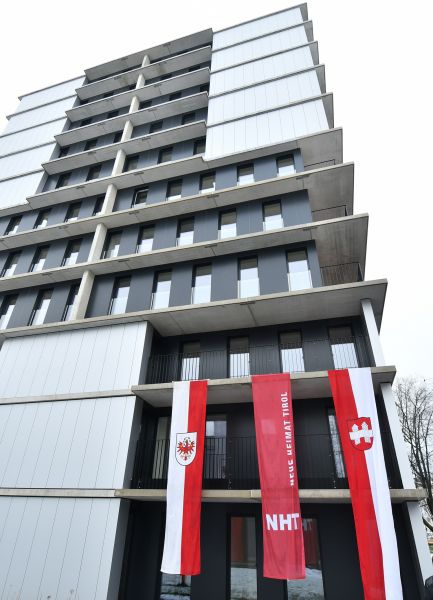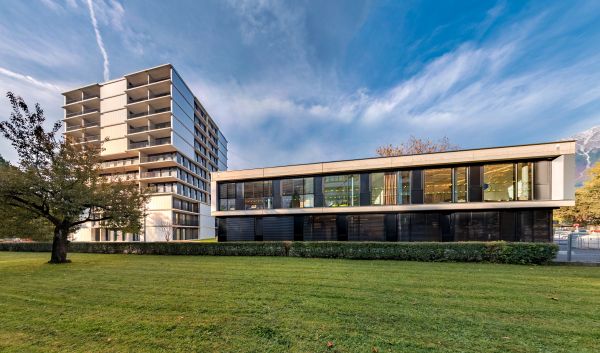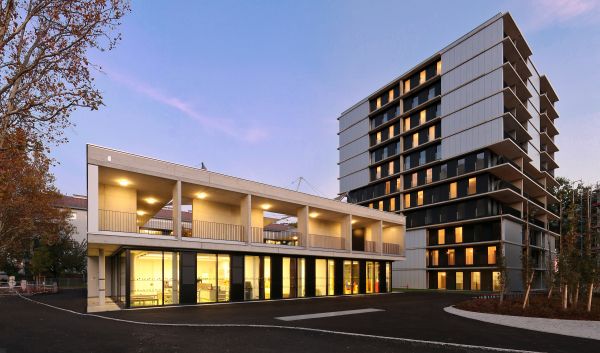Project Image Pool
There are 399 results.
Terms of use: The pictures on this site originate from the projects in the frame of the programmes City of Tomorrow, Building of Tomorrow and the IEA Research Cooperation. They may be used credited for non-commercial purposes under the Creative Commons License Attribution-NonCommercial (CC BY-NC).
Diagram of the Flexible Sector Coupling model.
The electric energy system is composed of the sectors electricity, mobility and heat. Generated electricity is directed to the sectors mobility and heat along the pathways thermal energy, fuels and electricity.
Copyright: IEA ES TCP Task35
Pit thermal energy storage in Dronninglund (DK)
The pit thermal energy storage of 60,000 m3 in Dronninglund, Denmark, stores heat coming from a solar thermal field and a heat pump.
Copyright: Fjernwärme Dronninglund
IEA ES Task 45 experts alongside the Hechingen pit thermal energy storage
The pit storage in Hechingen, Germany, i already dug out. It will be finished and connected to the district heating system of Hechingen in 2025.
Copyright: AEE INTEC, Wim van Helden
The former School at Kinkplatz at Night
Helmut Richter's school at Kinkplatz serves as a demonstration project for the GreenTech-Renovation exploratory project, as this building is a prime example of how topics can be dealt with in terms of sensible energy renovation.
Copyright: Mischa Erben
Benefits of energy-efficient refurbishment using the example of the school at Kinkplatz
The transferability of the project helps to accelerate the renovation wave and focuses particularly on difficult buildings with high energy consumption. The strategies and findings from GreenTech-Renovation can be transferred to all buildings dating from the last 70 years with high proportions of glass and with intelligent adaptations even further.
Copyright: GreenTech-Renovation Konsortium
Greening concept of the School at Kinkplatz
In addition to the climate and energy concept and the utilisation concept, effective synergies are created with greening measures on the façade, on the roof and in the interior. With innovative and coordinated integration of vegetation, the performance potential of building optimisation and energy measures can be increased.
Copyright: GreenTech-Renovation Konsortium
Vertical farming concept for the School at Kinkplatz
During the exploratory project, the idea arose to use the school at Kinkplatz as a training centre for future urban farmers or vertical farmers. Special significance is attributed to the possibility of seeing food production as a central component of an overarching typological further development of the existing building as a training centre for urban vertical farming. This gives the school at Kinkplatz a unique selling point worldwide.
Copyright: vertical farm institute
Vision workshop as part of the "Reallabor Gebäude" project
The illustration shows co-creation with stakeholders from business and society, which was carried out as part of a vision workshop in the project "Reallabor Gebäude - Gebäude als Reallabor für klimaneutrales, bedarfsgerechtes und leistbares Wohnen" in December 2022 at Lendhafen, Graz.
Copyright: StadtLABOR Innovationen für urbane Lebensqualität GmbH
Group photo Study tour on urban greening and renovation projects in Vienna
The picture shows the participants of the study tour to Vienna, which was carried out as part of the project "Reallabor Gebäude - Gebäude als Reallabor für klimaneutrales, bedarfsgerechtes und leistbares Wohnen".
Copyright: StadtLABOR Innovationen für urbane Lebensqualität GmbH
Axonometry architectural study in the project "Reallabor Gebäude - Gebäude als Reallabor für klimaneutrales, bedarfsgerechtes und leistbares Wohnen"
The illustration shows an excerpt from the architectural study that was carried out as part of the project "Reallabor Gebäude - Gebäude als Reallabor für klimaneutrales, bedarfsgerechtes und leistbares Wohnen". This is a refurbishment project including an extension.
Copyright: Gangoly & Kristiner Architekten ZT GmbH
Big picture exploratory project "Gebäude als Reallabor für klimaneutrales, bedarfsgerechtes und leistbares Wohnen"
The illustration shows a big picture of the exploratory project "Gebäude als Reallabor für klimaneutrales, bedarfsgerechtes und leistbares Wohnen". The graphic shows the objectives and planned results of the exploratory project.
Copyright: StadtLABOR Innovationen für urbane Lebensqualität GmbH
Neighborhood garden plan
Within the framework of a building association consisting of about 6-8 properties, the existing gardens could be interconnected to form a neighborhood garden in which countless design and usage possibilities of the green center could be realized. Here is an example with swimming pond
Copyright: ©ReHABITAT-Siedlung
Energy- and Mobility Carport
Information in the Energy and Mobility Carport during the closing event.
Copyright: ©ReHABITAT-Siedlung
Closing Event
Many interested people at the project closing event in the settlement
Copyright: ©ReHABITAT-Siedlung
Collage_Vision 2040
Visualization of a public space with more quality of stay and unsealed ground
Copyright: ©ReHABITAT-Siedlung
Time series with forcing terms
Time series of an experiment where the digital twin was adapted to the measurement data using forcing terms. At the beginning of the experiment, the measured and simulated temperatures do not yet match. After that, the differences between the two values are very small. See also other image showing the heat sources and sinks needed for this.
Copyright: EQUA
Calculated heat sources and sinks for the digital twin
Time series of an experiment where the digital twin was fitted to the measurement data using forcing terms. The graphic shows the required "Forcing Terms" = heat sources and sinks. See also the other graph with the associated measured and simulated temperatures during the experiment.
Copyright: EQUA
residential building St. Paulus
residential building St. Paulus
Copyright: NEUE HEIMAT TIROL Gemeinnützige WohnungsGmbH
residential building St. Paulus, northeast view
residential building St. Paulus, northeast view
Copyright: NEUE HEIMAT TIROL Gemeinnützige WohnungsGmbH
residential building St. Paulus, northwest view
residential building St. Paulus, northwest view

